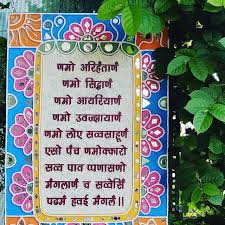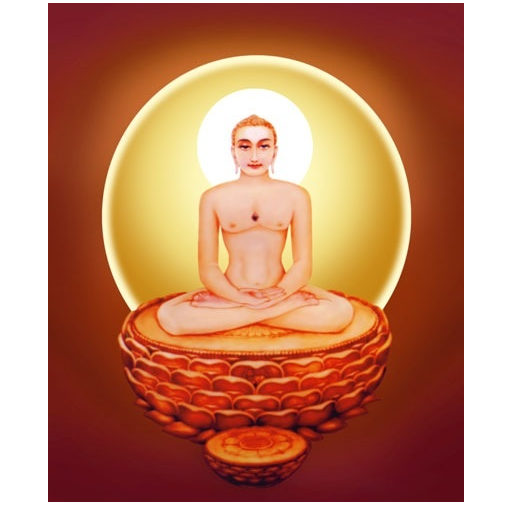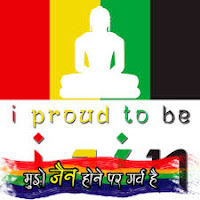Santhara is an unique parallel way of celebrating death.Only one Jainism- can preach such a bold way to accept death with a smile. Santhara means fast till death. Our human body is made of Pudgals
( particles) which has a tendency to deteriorate with passage of time.
Till now no way is found out by modern science to keep human alive for ever. Though it a harsh fact of life majority of the people try their best to prolong the lifeline. Even artificial ways like ventilators etc. are used to achieve this goal. In majority cases the attempt goes in vain and the patient leaves for another unknown destination with so many sufferings at time of current death. It is hard but a true reality.
Santhara as termed in Jainism is a process where the ailing patient knowing his last moments are reaching- opt for fast- voluntarily. He takes a vow not to eat food, medicines or drink water in presence of Suguru and family members. The particular person follows such a promise till the end of current life. It is "Sagari Santhara" if water is allowed otherwise, it is Javajiva Santhara Thus he conquers fear of death and greet it, with peace and smile by giving up love for body.There is difference in two terms though related to each other. They are Salekhna and Santara. Few noble soul without any serious health issue start this "Tapsya" for a longer period say 6 month or 12 month. In this period they do maximum fast like alternate Tela or Bela and give up all "Vigay" like Ghee, milk, sugar etc. End result is Santhara.
Own self consent is important condition of this Vrata. In absence of Suguru ,one can take it himself as guided in Pratikaman. If in any accident case very few seconds are left, the sufferer can tell --"With witness of Arihant and Siddha Bhagwan ,I opt for Santhara Vrat. Let me have "Char Sharana in this my last moments. ".In case of patient going in coma as per his desire family members can approve consent
on his behalf if he in his lifetime- patient has ever expressed desire.
Santhara is totally different from suicide. The frame of mind of concerned in both the cases is totally different. In Santhara vrata ,the person is in highly spiritual frame of mind and has obtained the knowledge of inevitability of death and voluntarily opts for it. It is called Apachim Marntiya Salekhna Vrata. Apachim means no work
( particles) which has a tendency to deteriorate with passage of time.
Till now no way is found out by modern science to keep human alive for ever. Though it a harsh fact of life majority of the people try their best to prolong the lifeline. Even artificial ways like ventilators etc. are used to achieve this goal. In majority cases the attempt goes in vain and the patient leaves for another unknown destination with so many sufferings at time of current death. It is hard but a true reality.
Santhara as termed in Jainism is a process where the ailing patient knowing his last moments are reaching- opt for fast- voluntarily. He takes a vow not to eat food, medicines or drink water in presence of Suguru and family members. The particular person follows such a promise till the end of current life. It is "Sagari Santhara" if water is allowed otherwise, it is Javajiva Santhara Thus he conquers fear of death and greet it, with peace and smile by giving up love for body.There is difference in two terms though related to each other. They are Salekhna and Santara. Few noble soul without any serious health issue start this "Tapsya" for a longer period say 6 month or 12 month. In this period they do maximum fast like alternate Tela or Bela and give up all "Vigay" like Ghee, milk, sugar etc. End result is Santhara.
Own self consent is important condition of this Vrata. In absence of Suguru ,one can take it himself as guided in Pratikaman. If in any accident case very few seconds are left, the sufferer can tell --"With witness of Arihant and Siddha Bhagwan ,I opt for Santhara Vrat. Let me have "Char Sharana in this my last moments. ".In case of patient going in coma as per his desire family members can approve consent
on his behalf if he in his lifetime- patient has ever expressed desire.
Santhara is totally different from suicide. The frame of mind of concerned in both the cases is totally different. In Santhara vrata ,the person is in highly spiritual frame of mind and has obtained the knowledge of inevitability of death and voluntarily opts for it. It is called Apachim Marntiya Salekhna Vrata. Apachim means no work
is left to be performed. Suicide may be by a quicker result method while Santhara involves no time frame. Suicide is attempted when one is too frustrated, disturbed and unable to find any solution for the problems faced. Santhara requires extra-ordinary courage and soul's determination while suicide is a cowardly act which enjoy life and running away when life throws challenge. Suicide is committed with very hasty decisions while Santhara is an outcome of a long perished dream. Suicide is termed as biggest sin as it involves killing ten life organs of a living body facing abnormal pain at time of exit of Prans.
If opting for death voluntarily is suicide, then what one can term. one joining military, Here chances of death are more than any other given profession. There is boldness and backing of soul for such decision.
In Bhagwatisutra Shatak 2 Mahaveer Bhagwan has termed Santhara as Panditmaran and has explained to Aarya Skandhakji all different types of Santhara. The Pachhakan for Santhara Vrata is given in the Pratikamansutra under chapter Badi Salekhnaka Path. It involves Vandana, Aaloyana, Pachhakhan and Osirami ( giving up body and love for it ). For daily Vrata small Salekhna path is also available in Pratikaman. Daily reading sows a seed of Panditmaran dream for us.
So many Sadhus, Sadhviji,Shravak and Shrawikas has accepted death with this great Vrata, I knew one Sadhuji who has taken this Vrata in his youth saying that if he completes age of 75 , he will opt for Santhara. And he followed it recently.So much followers daily pray before going to sleep- "Aahar,Sharir,Upadhi,Pachku Paap Atharah (18),.Maran Aawe To Vosire,Jaagu to Navkar,". All of them pray for death while in Santhara only. Since it is a intellectual
death, family members must avoid post death rituals.
I studied why there is so much importance of Santhata in Jainism. I found the answer in 4th Shatak of Bhagwati. Bhagwan has told that which ever feeling the soul gathers ( Leshya) at the time of death, it takes birth with same Leshaya in next life. Second is "Anaharak" means no food is a must precondition for achieving salivation. No intake of food reduces all of his "Kashaya ' to a greater extent.
Out of six Leshyas --Krishna, Neel, Kapot, Tejo, Padma and Shukla-first three are bad and last three are good. The soul leaving body with Santara usually get one of last three of good feelings. Since in said Santhara, he accepts death with peace and without tension and the confirms his faith in Jainism and salvation. Needless to add he gets new life in higher position in Deologa. We as ordinary lay man even
fear a small illness,while the soul opting for Santhara do not fear the
death but ready to welcome it. Death of a living soul is ultimate truth and who ever takes life as it comes and love truth do not fear death. Shrawaks, Sadhaviji and Sadhuji who live life as per Jinwani most probably get hint in their last month and they start taking all cautious Pachkans and move towards great Santara Vrata without telling it to family members Let us salute such great and noble souls -----!!!.
One can learn it and recite daily so that it can be fixed into our mind which is known as subconscious mind so can be used in emergency.
JAI JINENDRA-----------!!!------------ JAI MAHAVEER--------!!!.



















































